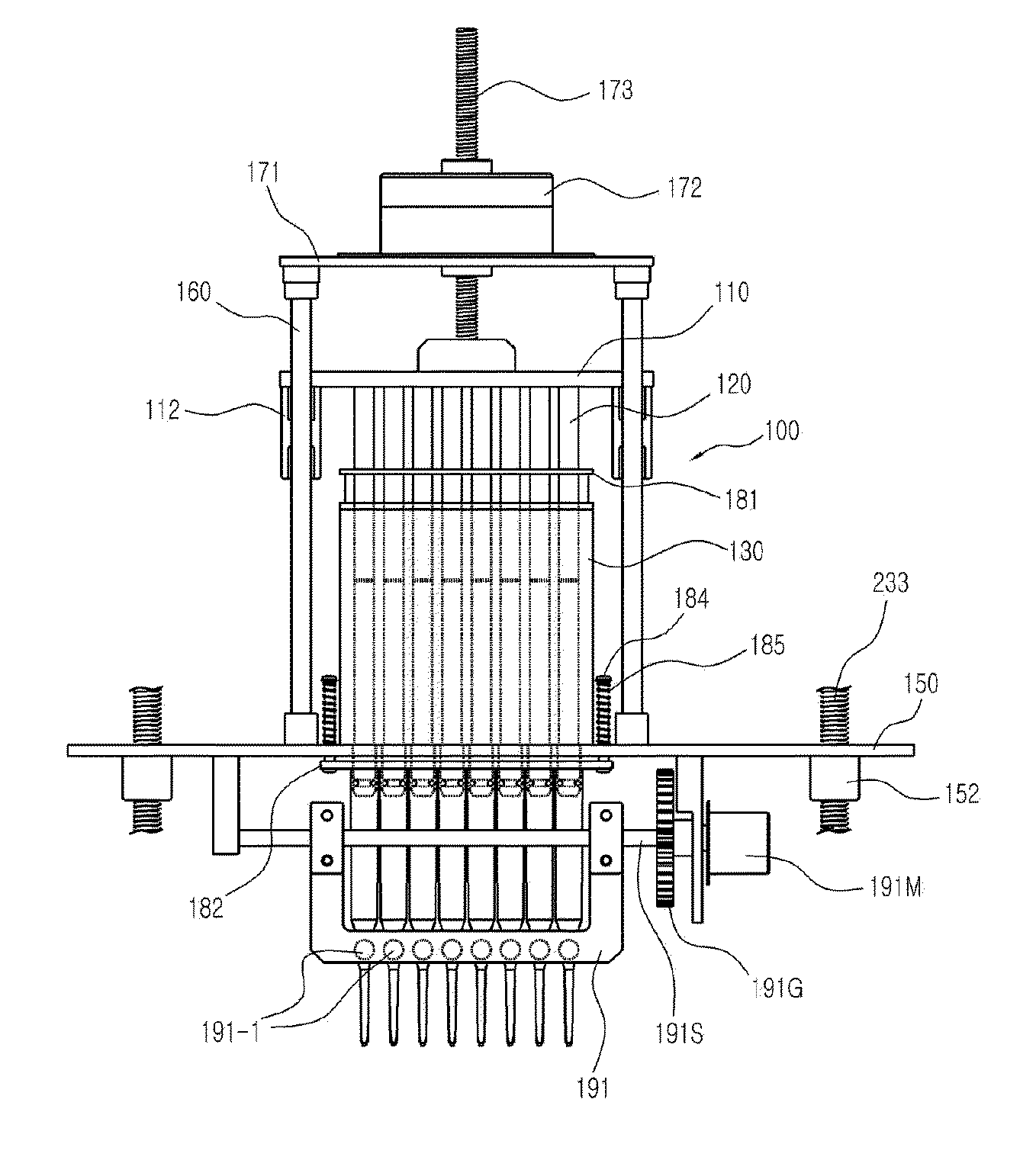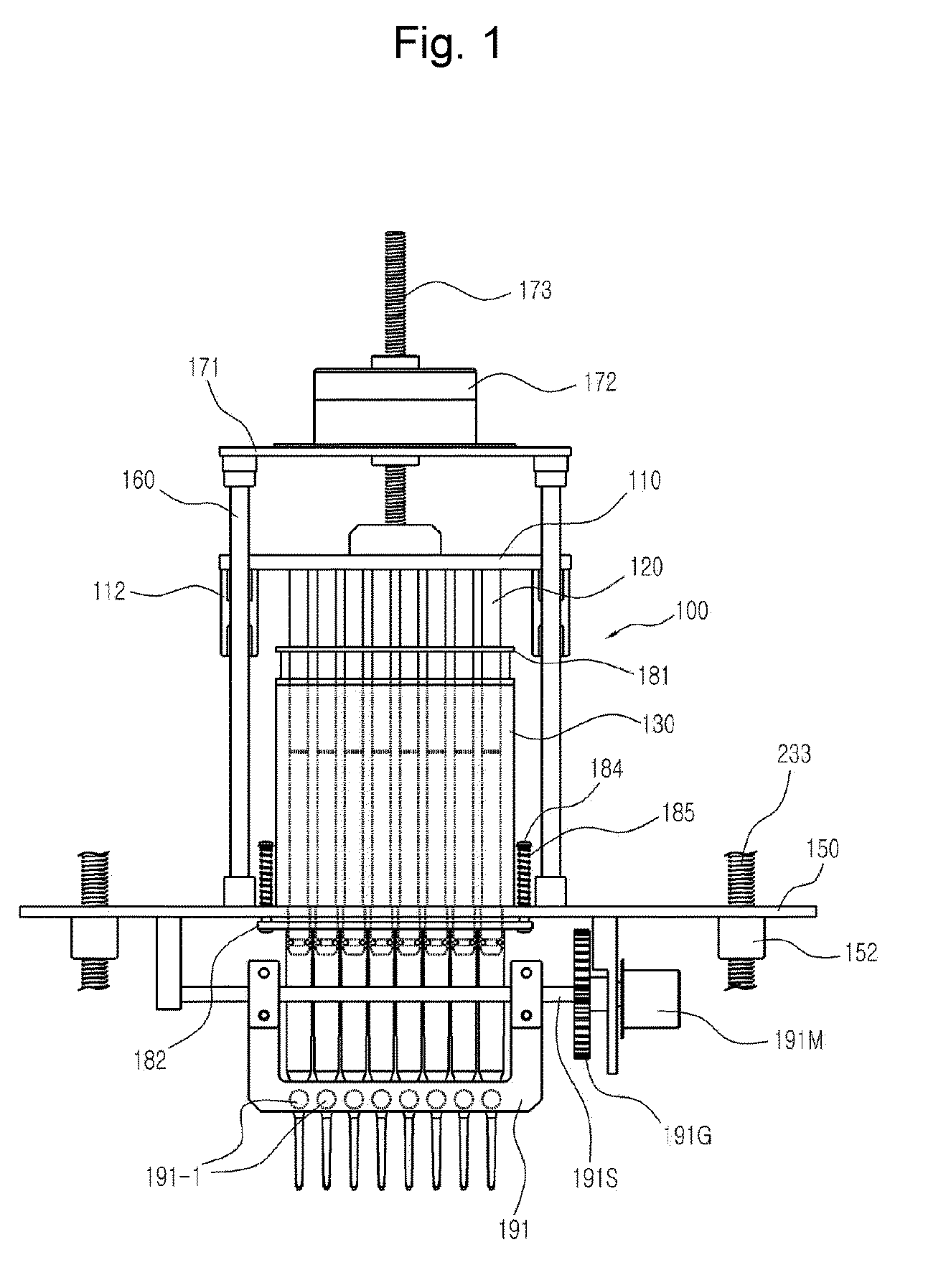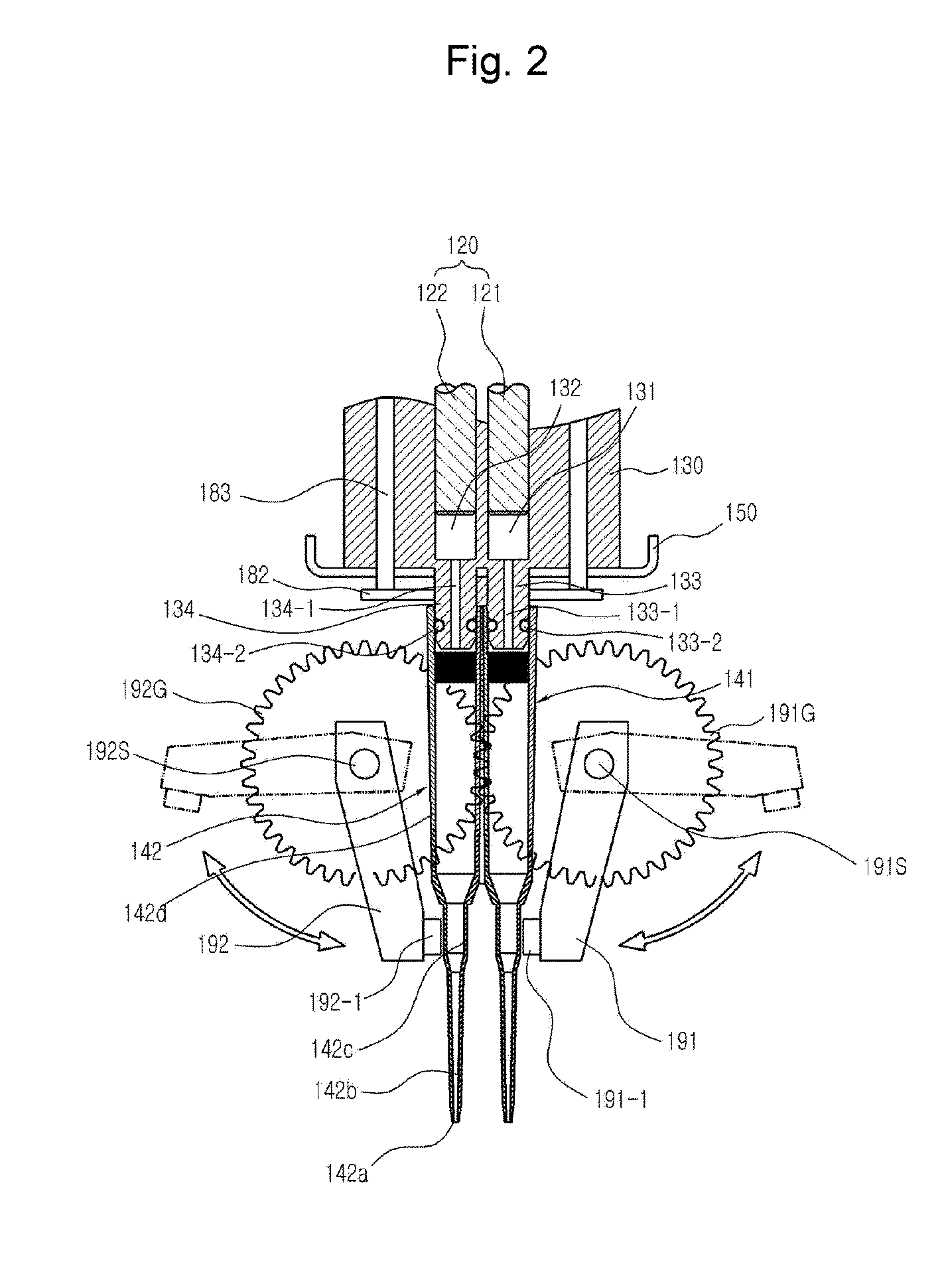Automatic refining apparatus, multi-well plate kit and method for extracting hexane from biological samples
- Summary
- Abstract
- Description
- Claims
- Application Information
AI Technical Summary
Benefits of technology
Problems solved by technology
Method used
Image
Examples
embodiment 1
[0048]Embodiment 1 relates an automatic refining apparatus of the present invention, i.e. an apparatus for separating target materials from a plurality of biological samples by using magnetic particles to which the magnetic particles are to be reversibly coupled. FIG. 1 and FIG. 2 schematically show major parts of an apparatus according to Embodiment 1. FIG. 3 schematically shows the apparatus according to Embodiment 1 with a casing partly removed. FIG. 4 is a perspective view of a base plate of the apparatus according to Embodiment 1. FIG. 5 illustrates a use of the base plate of the apparatus according to Embodiment 1. FIG. 6 illustrates a loading of a high-temperature reaction tube shown in FIG. 5. FIG. 7 illustrates an accommodation of the base plate of the apparatus according to Embodiment 1 in the casing. FIG. 8 is a perspective view of a multi-well plate kit according to Embodiment 1. FIG. 9 illustrates an extraction of DNA from blood according to Embodiment 1. FIG. 10 illust...
embodiment 2
[0094]Embodiment 2 relates to another automatic refining apparatus of the present invention, i.e. an apparatus for separating target materials from a plurality of biological samples by using magnetic particles to which the magnetic particles are to be reversibly coupled. FIGS. 11 to 13 schematically show major parts of an apparatus according to Embodiment 2.
[0095]Referring to FIGS. 11 to 13, a magnetic field application unit comprises a first row magnet mounting unit 191, a first row gear 191G, a first row rotation shaft 191S, a second row magnet mounting unit 192, a magnet mounting unit motor 192M, a second row gear 192G and a second row rotation shaft 192S.
[0096]Referring to FIGS. 11 and 12, the second row magnet mounting unit 192 comprises a second row rotating arm 192-2 and a second row plate mount 192-3.
[0097]Referring to FIGS. 11 and 12, the second row rotating arm 192-2 is radially connected and fixed to the second row rotation shaft 192S. The second row plate mount 192-3 is ...
embodiment 3
[0108]Embodiment 3 relates to a multi-well plate kit for use in the automatic refining apparatus according to Embodiment 1 or Embodiment 2. A description thereof will be omitted since it is the same as that given with respect to Embodiment 1.
PUM
| Property | Measurement | Unit |
|---|---|---|
| Temperature | aaaaa | aaaaa |
| Force | aaaaa | aaaaa |
| Magnetic field | aaaaa | aaaaa |
Abstract
Description
Claims
Application Information
 Login to View More
Login to View More - R&D
- Intellectual Property
- Life Sciences
- Materials
- Tech Scout
- Unparalleled Data Quality
- Higher Quality Content
- 60% Fewer Hallucinations
Browse by: Latest US Patents, China's latest patents, Technical Efficacy Thesaurus, Application Domain, Technology Topic, Popular Technical Reports.
© 2025 PatSnap. All rights reserved.Legal|Privacy policy|Modern Slavery Act Transparency Statement|Sitemap|About US| Contact US: help@patsnap.com



